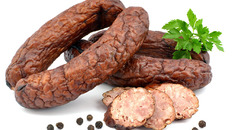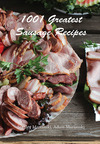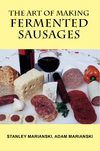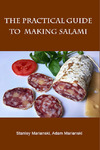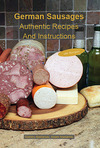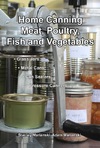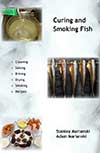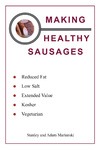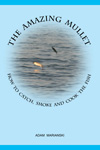Meats and Sausages
Hunter Sausage
Hunter sausage was a small sausage that hunters carried with them when going on a hunt. They also carried alcohol infusions or strong Lithuanian honey drink known as "krupnik." Those trips were very popular before Christmas time and allowed men to get away from all this cleaning and preparations at home.
| Materials | Metric | US |
|---|---|---|
| boar meat | 500 g | 1.32 lb |
| boar meat rich in connective tissue* | 100 g | 3.5 oz |
| deer meat | 400 g | 0.88 lb |
Ingredients per 1000g (1 kg) of materials
| salt | 18 g | 3 tsp |
| cure #1 | 2.5 g | 1/2 tsp |
| pepper | 4 g | 2 tsp |
| ground juniper | 2 g | 1 tsp |
| garlic | 7 g | 2 cloves |
Instructions
- Cut boar and deer meat into 1 inch pieces, but keep separate.
- Mix salt and cure #1 together. Apply ½ of the mixture to boar meat and ½ to deer meat.
- Keep all meat types separately. Cover containers and place in refrigerator for 3 days.
- Grind deer meat with 12 mm (1/2 inch) plate, grind boar meat with 10 mm (3/8 inch) plate.
- Grind boar meat with connective tissue through 3 mm (1/8 inch) plate. Grind second time. Add some cold water and start mixing and kneading until it feels sticky.
- Mix all meats together adding spices. Take your time, mix well until it feels sticky.
- Stuff firmly into 36 mm sheep casings. Make 8 inch long links.
- Smoke at 122° F (50° C) for about 60 minutes. Keep on smoking 30 more minutes increasing temperature to 185° F (80° C). Increase temperature to 194° F (90° C) for about 25 minutes. The internal meat temperature should be about 160° F (71° C). The sausage can be somewhat shriveled on the outside due to baking.
- Cool sausages in air.
Notes
You can never go wrong by adding some pork back fat, especially when boar meat is all lean.
* meats with sinew, gristle, silver skin contain a lot of collagen which helps to bind the sausage mass. A good example is pork leg, hock, jowl or skin.
* meats with sinew, gristle, silver skin contain a lot of collagen which helps to bind the sausage mass. A good example is pork leg, hock, jowl or skin.

